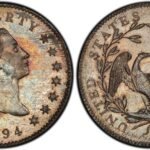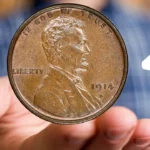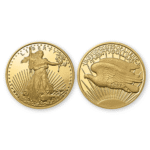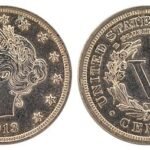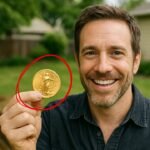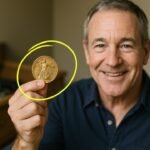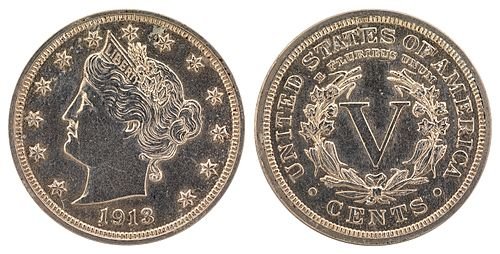
Every collector’s world has its own “Michael Jordan moment” — that one item so rare, so legendary, it changes the entire game. In basketball, it’s Jordan’s rookie card. In art, it’s the Mona Lisa. And in coin collecting, that title belongs to the 1913 Liberty Head Nickel — a coin that was never supposed to exist, yet today is worth over $3 million.
Honestly, it’s hard to believe a five-cent piece could become the holy grail of American numismatics. But the story behind it is so full of mystery, luck, and sheer coincidence that it’s no wonder collectors call it the Michael Jordan rookie card of the coin world.
A Coin That Shouldn’t Exist – Yet Does
Let’s rewind to the early 1900s. The Liberty Head nickel design had been in use from 1883 to 1912. But by 1913, the U.S. Mint had officially switched to the Buffalo nickel, marking the end of the Liberty series. So, logically, there should be zero Liberty nickels dated 1913.
Yet somehow, five of them surfaced. Yes — only five coins, all bearing the forbidden year 1913, exist today. They were never approved, never listed in mint records, and never publicly announced.
So how did they appear? Most experts believe that a clever Mint employee named Samuel W. Brown, who worked at the Philadelphia Mint in 1913, quietly struck a few coins before the new Buffalo design took over. Fast-forward a few years — Brown suddenly “discovers” the coins and offers to buy any 1913 Liberty nickels he can find. A little suspicious, right? Most historians believe it was his way of legitimizing his secret creation.
Meet the Famous Five
These five coins have since become legends in their own right — each one with a unique backstory, a different owner, and an adventurous journey through time.
| Nickname / Specimen | Current Location or Owner | Estimated Value (USD) | Condition (Grade) | Notable Facts |
|---|---|---|---|---|
| Eliasberg Specimen | Private Collection | $4.5 million (sold 2018) | PR-66 (Superb Proof) | Finest known example |
| Olsen Specimen | Smithsonian Institution (D.C.) | Not for sale | PR-64 | Displayed in museums |
| Walton Specimen | Private Collection | $3.2 million (2022 est.) | PR-63 | Lost for 40 years after car crash |
| Norweb Specimen | ANA Money Museum | Priceless (museum-owned) | PR-64 | Donated to the public |
| McDermott Specimen | Smithsonian National Museum | Donated; priceless | AU-58 (Slight wear) | Only circulated piece |
Each coin tells a different story — of collectors, accidents, recoveries, and rediscoveries. To be fair, few artifacts have lived lives as colorful as these five nickels.
The Vanished Coin That Came Back
Perhaps the most thrilling part of the story belongs to the Walton specimen. Its owner, George O. Walton, died tragically in a 1962 car crash while carrying the coin. It vanished for decades, presumed destroyed. But in 2003, Walton’s family discovered it in a small box in their closet, wrapped in an envelope labeled “1913 Liberty Nickel.”
For years, even experts thought it was fake. But after extensive testing, it was authenticated — the missing fifth coin. Imagine holding a family heirloom worth millions, lost for 40 years. That’s the kind of story Hollywood dreams are made of.
Why It’s Worth Millions
So, why all the hype over a tiny nickel? Simple: rarity, mystery, and history.
Only five coins. That’s it. No sixth one has ever been confirmed, and no official record of their minting exists. Combine that with their secret origin and legendary provenance, and you’ve got a numismatic superstar.
And when you think about it, that’s exactly why collectors compare it to Michael Jordan’s rookie card. Jordan’s card represents the beginning of greatness — a tangible piece of history. Similarly, the 1913 Liberty Nickel represents the pinnacle of coin collecting — something so unique, even billionaire collectors have to wait years for a chance to own it.
Honestly, in the world of coins, it’s not just money — it’s mythology.
What Experts Say
Numismatic historians agree that the 1913 Liberty Nickel has transcended its face value and even its metal worth. Dr. Emily Harrison, a curator at the ANA Museum, once called it “a perfect blend of art, mystery, and American history — all in the palm of your hand.”
On the flip side, collectors love it because it represents rebellion — a coin that broke the rules yet ended up defining an entire generation of numismatics. It’s like Jordan’s first dunk — unexpected, unforgettable, and iconic.
How the Market Sees It
Over the years, these nickels have traded hands at record-breaking auctions. The Eliasberg specimen, considered the finest, sold for $4.5 million in 2018. The others have sold between $3 million and $3.7 million, depending on their condition and ownership history.
Each time one goes up for auction, it makes global headlines — not just among coin collectors, but in mainstream media too. To be fair, few collectibles — whether baseball cards, watches, or art — can sustain such fascination for over a century.
What Makes It the “MJ of Coins”
Let’s face it — not every rare coin can be compared to Michael Jordan. But this one? It’s got the same qualities:
- Legendary status
- A mysterious origin story
- Incredible market value
- A small number of originals
- Global recognition
Just like Jordan changed basketball forever, the 1913 Liberty Nickel redefined what coin collecting could mean. It’s not just about money — it’s about owning a piece of living history.
FAQs
1. Why is the 1913 Liberty Nickel so rare?
Because it was never officially minted — only five were struck privately, likely without authorization.
2. Who created the 1913 Liberty Nickel?
It’s widely believed a Mint employee named Samuel W. Brown secretly made them before the Buffalo Nickel design began production.
3. What’s the highest price one has sold for?
The Eliasberg specimen sold for about $4.5 million in 2018.
4. Where can I see one today?
Two specimens are on display at the Smithsonian Institution and the ANA Money Museum.
5. Could there be a sixth coin hidden somewhere?
While rumors persist, no verified sixth specimen has ever surfaced — making the known five even more precious.
